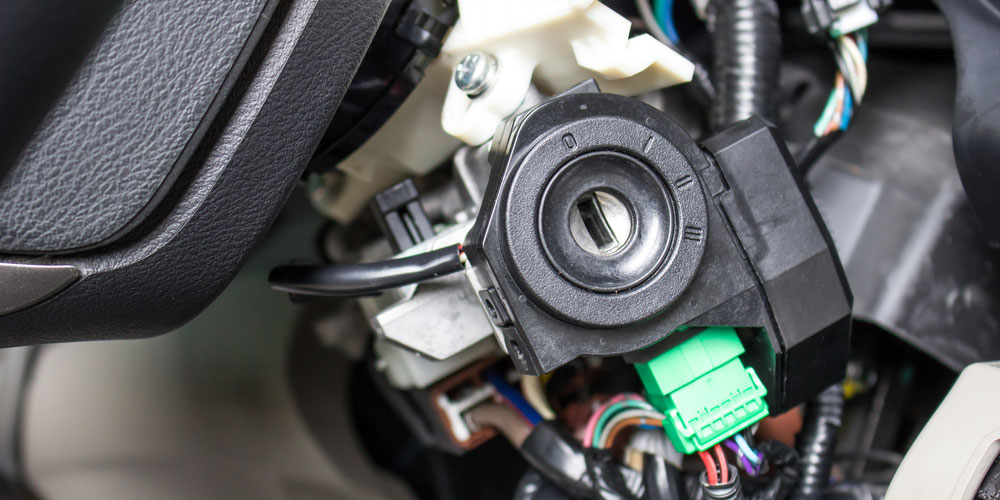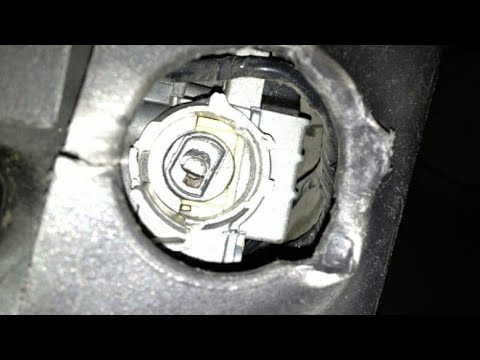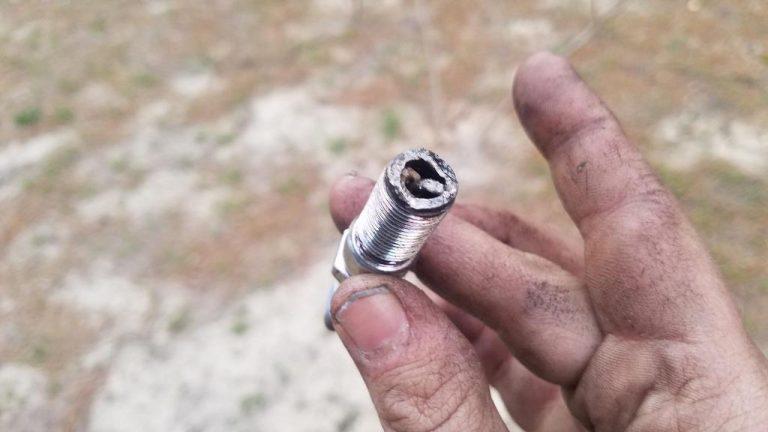Removing Ford Ignition Cylinder Without Key: Step-by-Step Guide
To remove a Ford ignition cylinder without a key, you need to access the ignition switch and release the locking mechanism. This process requires specific tools and a careful approach.
Removing a Ford ignition cylinder without a key can seem daunting, but it’s manageable with the right guidance. First, ensure your vehicle is in a secure location and you have the necessary tools, such as a screwdriver, drill, and a paperclip.
Begin by disconnecting the vehicle’s battery to prevent any electrical issues. Access the ignition switch by removing the steering column covers. Locate the locking pin or tab on the ignition cylinder and release it using the paperclip. Carefully pull out the ignition cylinder. Always consult your vehicle’s manual for specific instructions and safety precautions.
Tools And Materials
Removing a Ford ignition cylinder without a key requires specific tools and materials. Using the right tools ensures a smoother and safer process. This section will outline the essential tools and recommended supplies for this task.
Essential Tools
Having the right tools is crucial for removing the ignition cylinder. Below is a list of essential tools you will need:
- Screwdrivers – Phillips and Flathead
- Drill – With various drill bits
- Pick Tool – For precision work
- Steering Wheel Puller – Necessary for some Ford models
- Wrench – Adjustable for different bolt sizes
Recommended Supplies
In addition to the tools, having the right supplies makes the job easier. Here are the recommended supplies:
- Lubricant – To ease the removal process
- Replacement Ignition Cylinder – Ensure compatibility with your Ford model
- Protective Gloves – For safety and comfort
- Flashlight – For better visibility in tight spaces
- Cleaning Cloth – To wipe away debris
With these tools and supplies, you’ll be well-prepared for removing your Ford ignition cylinder without a key. Make sure to work carefully and follow all safety guidelines.
Credit: www.ford-trucks.com
Preparation
Before you start removing the Ford ignition cylinder without a key, proper preparation is crucial. This ensures you work safely and efficiently. Follow these steps carefully.
Disconnecting The Battery
First, disconnect the car battery. This prevents electrical accidents. Use a wrench to loosen the negative battery terminal. Remove the cable and secure it away from the battery. This avoids any accidental reconnection.
Positioning The Steering Wheel
Next, position the steering wheel. Turn it so the wheels are straight. This makes the ignition cylinder more accessible. Lock the steering wheel by turning the key to the off position. If the key is lost, skip this step.
By following these steps, you ensure a smooth and safe process. Proper preparation can save time and prevent damage.
Accessing The Ignition Cylinder
Removing a Ford ignition cylinder without a key can be tricky. The first step is accessing the ignition cylinder. This involves a few important steps. Let’s break it down into simple tasks.
Removing Steering Column Covers
To access the ignition cylinder, you need to remove the steering column covers. These covers hide the ignition cylinder and other components.
- Locate the screws on the steering column cover.
- Use a screwdriver to remove these screws.
- Gently pull off the top and bottom covers.
Be careful not to damage the covers. Set the screws aside in a safe place. This keeps them from getting lost.
Locating The Ignition Cylinder
Once the covers are off, you can see the ignition cylinder. It is usually near the steering wheel. Look for a metal tube with wires connected to it.
Here is a simple table to help you:
| Component | Description |
|---|---|
| Ignition Cylinder | Metal tube with wires |
| Steering Column | Holds the ignition cylinder |
Next, you need to remove the ignition cylinder. This can be done with simple tools. Make sure you have everything ready.

Credit: unitedlocksmith.net
Removing The Ignition Cylinder
Removing the ignition cylinder in a Ford vehicle without a key can be challenging. This guide simplifies the process. Follow these steps carefully for a successful removal.
Using A Drill To Create Access
First, gather your tools. You’ll need a power drill, drill bits, and safety gear.
- Wear safety glasses to protect your eyes.
- Select a drill bit that matches the lock’s diameter.
- Insert the drill bit into the drill.
Next, drill into the ignition lock cylinder.
- Position the drill at the center of the keyhole.
- Drill slowly to avoid damaging surrounding parts.
- Stop drilling once you feel the bit pass through the lock mechanism.
Now, you have access to the ignition cylinder.
Extracting The Cylinder
After drilling, use a flathead screwdriver to remove the cylinder.
- Insert the screwdriver into the drilled hole.
- Turn the screwdriver counterclockwise.
- Gently pull the cylinder out of the housing.
The cylinder should come out smoothly.
If the cylinder is stuck, double-check your drilling. Ensure the hole is deep enough.
Once removed, you can replace it with a new ignition cylinder.
Follow these steps to ensure a safe and successful removal of your Ford ignition cylinder.
Installing A New Ignition Cylinder
Removing the old ignition cylinder is only the first step. Installing a new ignition cylinder is equally important. This guide will walk you through the process. Follow these steps for a smooth installation.
Preparing The New Cylinder
Before installing, ensure the new cylinder matches your Ford model. Compare it with the old cylinder. This ensures a proper fit.
Next, gather all tools. You will need a screwdriver, lubricant, and the new cylinder. Lay out your tools and parts on a clean surface. This keeps everything organized.
Lubricate the new cylinder. Use a small amount of lubricant on the moving parts. This helps with a smooth installation.
Insert the new key into the new cylinder. Turn it to the “ACC” position. This aligns the internal components.
Securing The New Cylinder
Carefully insert the new cylinder into the ignition slot. Ensure it aligns properly.
Push the cylinder gently until it clicks into place. You should feel a slight resistance.
Test the new cylinder. Turn the key to ensure it moves smoothly. It should switch between “OFF,” “ACC,” and “START” positions easily.
Once tested, secure the cylinder with screws. Tighten them with a screwdriver. Ensure they are snug but not over-tightened.
| Step | Action |
|---|---|
| 1 | Gather tools and parts |
| 2 | Lubricate the new cylinder |
| 3 | Insert the key and turn to “ACC” |
| 4 | Insert the cylinder into the ignition slot |
| 5 | Push until it clicks into place |
| 6 | Test the cylinder with the key |
| 7 | Secure with screws |
Congratulations! You have successfully installed a new ignition cylinder. Your Ford is now ready for use.
Testing The New Ignition Cylinder
Once you’ve successfully installed the new ignition cylinder, it’s crucial to test it. This ensures everything is working correctly. Follow these steps to ensure the new ignition cylinder functions as expected.
Reconnecting The Battery
After installing the new ignition cylinder, the first step is to reconnect the battery. Follow these steps:
- Locate the car battery.
- Attach the positive cable to the battery terminal.
- Secure the negative cable to its terminal.
- Tighten the connections with a wrench.
Ensuring the battery is securely connected is vital. A loose connection can cause issues.
Verifying Proper Operation
Now, it’s time to check if the ignition cylinder works. Follow these steps:
- Insert the key into the ignition cylinder.
- Turn the key to the “On” position.
- Check if the dashboard lights come on.
- Turn the key to the “Start” position.
- Ensure the engine starts smoothly.
If the engine starts without issues, the new ignition cylinder is functioning correctly.
If you encounter any problems, recheck the installation steps. Make sure all connections are secure.
| Step | Description |
|---|---|
| 1 | Reconnect the battery |
| 2 | Insert the key |
| 3 | Turn the key to “On” |
| 4 | Check dashboard lights |
| 5 | Turn key to “Start” |
| 6 | Ensure engine starts |
Testing the new ignition cylinder is a crucial step. It ensures your vehicle operates smoothly.

Credit: m.youtube.com
Frequently Asked Questions
How To Remove Tumbler From Ignition Switch?
First, disconnect the battery. Remove the steering column cover. Insert the key, turn to the ACC position. Press the release pin and pull out the tumbler.
How To Unlock An Ignition Lock Cylinder?
To unlock an ignition lock cylinder, insert the correct key and turn it to the “On” position. If the key won’t turn, gently jiggle the steering wheel while turning the key. If the problem persists, consult a professional locksmith.
How Do I Get My Ford Key Out Of The Ignition?
Ensure your car is in park. Turn the key to the “Off” position. Wiggle the steering wheel gently. Try pulling the key out. If it still won’t come out, check for debris or contact a professional.
How Do I Reprogram Or Reset A New Ignition Cylinder With A Key?
Insert the key into the new ignition cylinder. Turn it to the “On” position. Wait 10 minutes. Turn it off. Repeat twice.
Conclusion
Removing a Ford ignition cylinder without a key can be challenging but achievable. Follow the steps carefully to avoid damage. Always prioritize safety and consider professional help if unsure. With patience and the right tools, you can successfully complete the task.
Enjoy your newly gained car maintenance skills!






